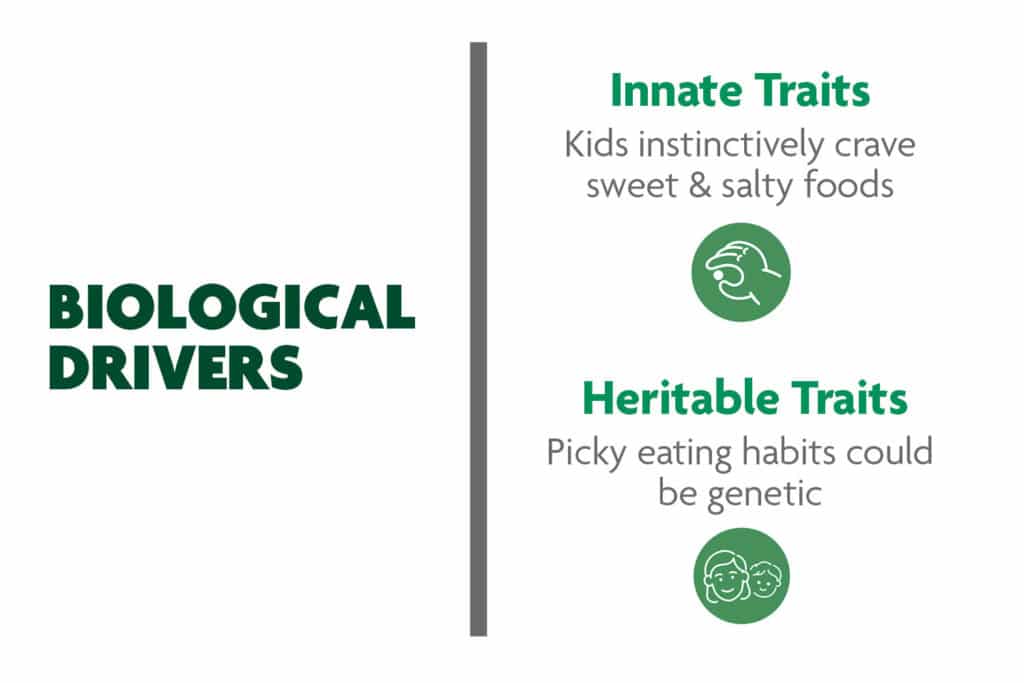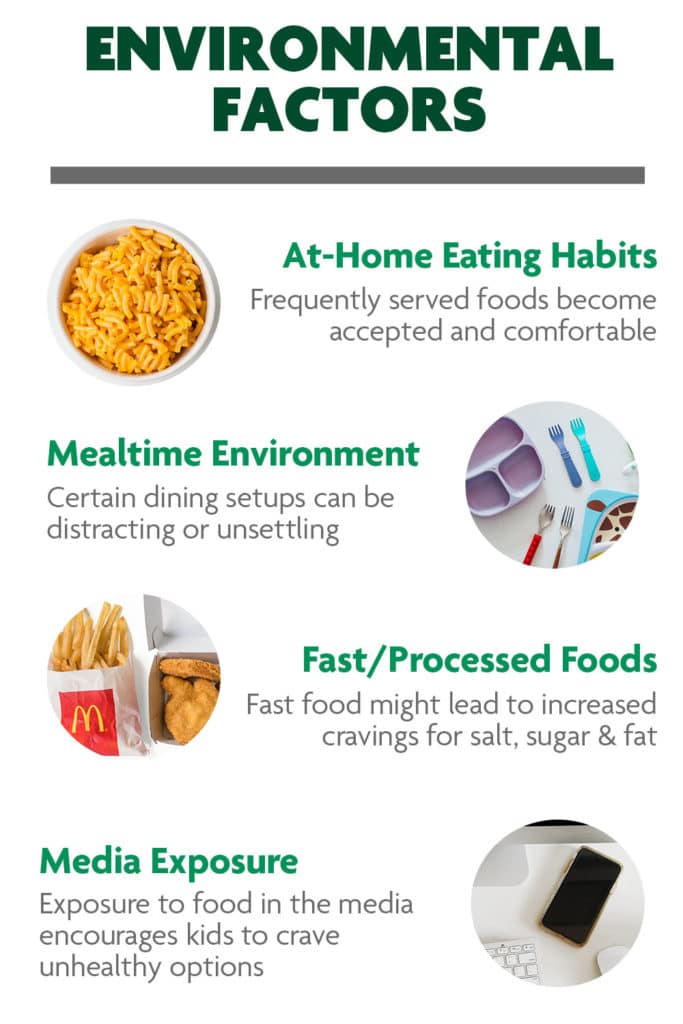Why Are Kids Picky Eaters?
Picky eating is incredibly common in kids, with some academic studies pointing to a rate as high as 22% in children between the ages of 2 and 11. Another survey of 4,000 children found that nearly half of all kids can be described as picky eaters at one time or another.
But the knowledge that your picky eater isn’t the only one probably won’t do much to ease the stress after three, four or five nights of dinner table stand-offs!
If you’re wondering how to overcome picky eating in your household, the solution starts with a deeper look at the root causes behind these behaviors: Why are kids picky eaters in the first place? In this article, we’ll examine the two most important causes of picky eating in kids: 1) biological factors and 2) environmental influences.
Biological Drivers of Picky Eating
The latest scientific research points to two main connections between human biology and picky eating:
1. Innate Tastes
Multiple studies across many years have demonstrated that humans instinctively prefer sweet and salty foods—a craving that children exhibit even more strongly than adults.. Given the choice, kids of all ages will naturally reach for salty or sweet food over something sour, bland or bitter.
2. Heritable Traits
Picky eating is often associated with neophobia, or the fear and avoidance of new foods. A picky eater may see a new food, or even the same food in a different meal or environment , and simply refuse to try it.
In one study, researchers concluded that up to 75% of neophobic traits in kids can actually be attributed to genetics. Just like eye color or skin tone, neophobia may be passed down within families.
Environmental Factors of Picky Eating
Although human biology certainly plays a role in picky eating, it’s not the whole picture. Our children’s instinctive taste preferences are also strongly influenced or exacerbated by the world around us.
There are four important environmental influences on the development and expression of picky eating:

1. At-Home Eating Habits
One of the biggest influences on a child’s picky eating is his or her home environment. Simply put, the foods that we frequently serve, whether specific dishes or general food groups, become familiar, accepted and comfortable for our children.
For instance, if kids get used to eating salty pasta dishes with little variation in proteins, veggies or spices, they may refuse to try anything that doesn’t look like “normal” spaghetti and meatballs. Similarly, if dessert is offered at the end of every single meal, our kids may come to expect something sugary—potentially ignoring their own signs of fullness in favor of that irresistible sugar rush.
2. Mealtime Environment
In many cases, children may exhibit picky eating behaviors not because of the food on the table but rather the dining setup. They may feel unsettled, dissatisfied or distracted by certain surroundings::
- Their chair or high chair
- Their position at, or distance from, the table
- The utensils being used
- Ambient noise or distractions in the room, including TVs, tablets and phones
- The actions/attention of others around them (e.g. parents eating at the table together vs. doing chores and moving around)
3. Fast/Processed Foods
No discussion of environmental influences on picky eating would be complete without a mention of fast and processed foods. Although convenient, these foods are often loaded with sugar, sodium and fat—even so-called “healthy” options.
As a case in point, academic researchers assessed the nutritional quality of 1,146 combinations of kids meals from 10 of the biggest fast food chains in the country. The results found that only 3% of all investigated kids meals met the recommended kid nutrition guidelines set out in the National School Lunch Program (NSLP)!
With excessive consumption of tasty but low-nutrition fast food kids meals, children may develop an increased tolerance for salt, sugar and fat, leading them to reject foods they would otherwise accept.
4. Media Exposure
A final environmental factor that may encourage picky eating is the media. Many children’s TV programs include advertisements for processed foods like candy, sugary cereals and fast food meals. Repeated exposure may encourage kids to push for these foods over healthier, fresher options.
Helping Reshape Your Child’s Taste Buds
As studies have shown, the causes behind picky eating can be quite multifaceted, and the answer to the question, “Why are kids picky eaters?” ranges from biological instincts to the environment around us.
Fortunately, though, it is possible to navigate picky eating! With a little bit of knowledge and a whole lot of patience, we can reshape our little ones’ taste buds.
Here at Nurture Life, many of us are parents ourselves, and we recognize that what and how we feed our children is important, starting from the earliest age. That’s why our meals keep salt and sugar in check and why we include many meal variations on our baby, toddler and kid menus to introduce new foods in approachable ways. Our mission isn’t just to feed kids; it’s to help families nourish their children and move beyond picky eating—together.
If you have questions about picky eating at any age or our meals for picky eaters, send our childhood nutrition experts a message at nutrition@nurturelife.com!


